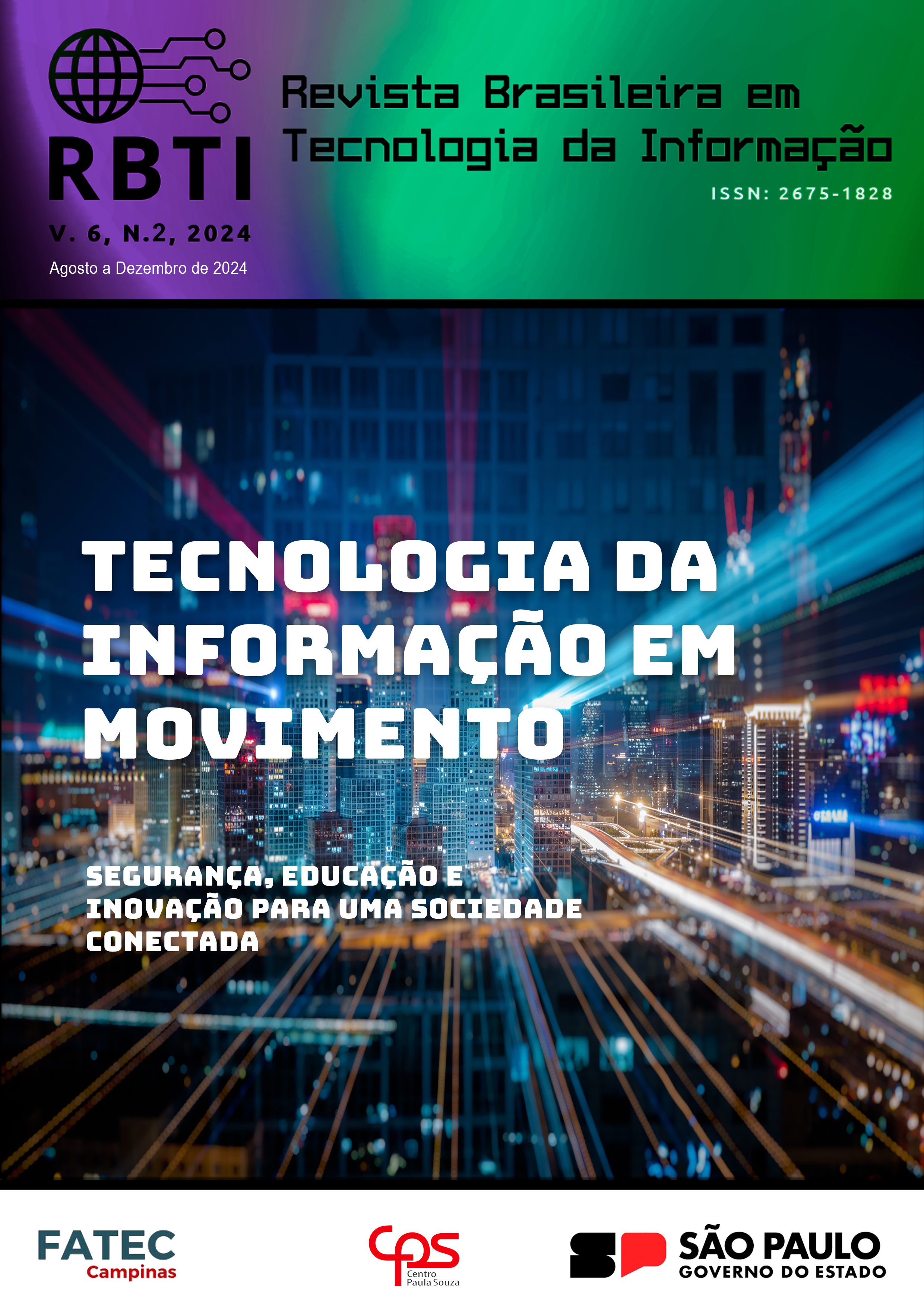O Robotics championship in a technical school integrated with high school: students' perceptions
percepções dos estudantes
Keywords:
Arduino; Robotics; Championship.Abstract
This study presents a project developed in a technical high school, more specifically in the Embedded Systems discipline, in the Technical Course in Integrated Systems Development for High School Education, which aimed to introduce educational robotics in the classroom. The project used the Arduino platform, a well-known platform for prototyping and learning in microcontrollers, which has an Atmega 328P microcontroller, along with an acrylic chassis and electronic components, such as DC motors, to build a robot, controlled by means of Bluetooth serial communication, where the students used their own cell phones to perform this control. The study also addresses the importance of educational robotics in the education of students, especially in technical courses focused on the area of technology. In addition, it presents basic concepts about robotics, embedded systems and the Internet of Things. The project resulted in the 1st Robotics Championship at the school, with awards and participation of the entire faculty present on the date, management/pedagogical team and students. The students were also invited to demonstrate their projects at the 1st Interschool Science and Technology Fair. After the project was completed, students evaluated the process through an electronic form.
References
ASHTON, Kevin. Internet das coisas: nova revolução da conectividade. Revista Inovação em Pauta, São Paulo, n. 18, p. 6-8, dez. 2014. Disponível em: http://finep.gov.br/noticias/todas-noticias/4446-kevin-ashton-entrevista-exclusiva-com-o-criador-do-termo-internet-das-coisas. Acesso em: 20 maio 2019.
CAMPOS, Flávio Rodrigues. A robótica para uso educacional. São Paulo: Editora Senac São Paulo, 2019.
CEETEPS. Centro Estadual de Educação Tecnológica Paula Souza. Plano de curso da habilitação profissional de técnico em desenvolvimento de sistemas integrado ao ensino médio. Número do plano 405. Eixo tecnológico: Informação e Comunicação. São Paulo, 2018.
CENTRO PAULA SOUZA. Sobre o Centro Paula Souza. [2022]. Disponível em: https://www.cps.sp.gov.br/centro-paula-souza/. Acesso em: 15 set. 2022.
CHRIST, C.; SANCHEZ, W. Robótica e Internet de Todas as Coisas. 1. ed. São Paulo: Din4mo, 2018. v. 6. (Coleção Gestão e Empreendedorismo na Era Digital).
D’ABREU, João Vilhete Viegas. Ambiente de aprendizagem baseado no uso de dispositivos robóticos automatizados. In: BARANAUSKAS, Maria Cecília Calani; MAZZONE, Jason; VALENTE, José Armando. (Org.). Aprendizagem na era das tecnologias digitais. São Paulo: Cortez, 2007.
FREIRE, Paulo. Pedagogia do oprimido. 17. ed. Rio de Janeiro: Paz e Terra, 1987.
LUCCHESI, Rafael. Robótica nas escolas: impacto pedagógico e futuro profissional. Veja, Economia, 29 abr. 2022. Disponível em: https://veja.abril.com.br/economia/o-impacto-da-robotica-na-educacao/. Acesso em: 29 abr. 2022.
SILVA, Rodrigo Barbosa e; BLIKSTEIN, Paulo (Org.). Robótica educacional: experiências inovadoras na educação brasileira. Porto Alegre: Penso, 2020. p. IX.
WEISER, Mark. The computer for the 21st century. Scientific American, p. 94-104, set. 1991.
Downloads
Published
How to Cite
Issue
Section
License
Copyright (c) 2025 Portugues

This work is licensed under a Creative Commons Attribution-NonCommercial 4.0 International License.
A Revista Brasileira em Tecnologia da Informação utiliza a licença do Creative Commons (CC), preservando assim, a integridade dos artigos em ambiente de acesso aberto.



